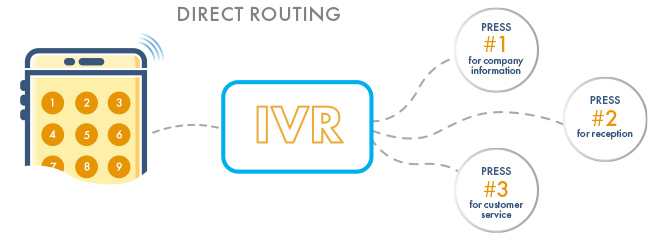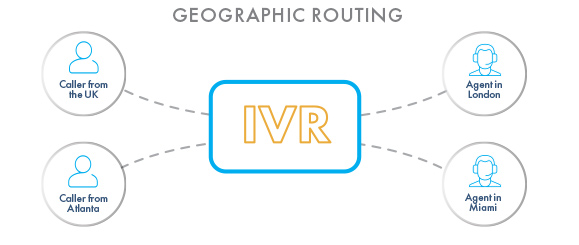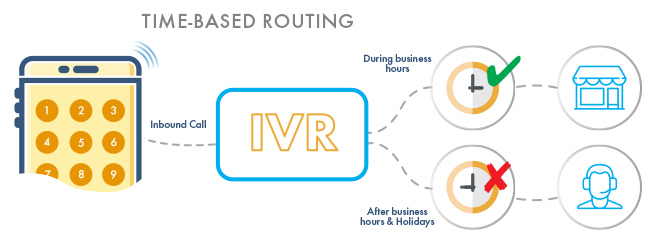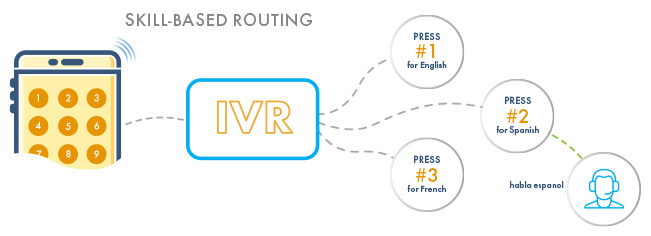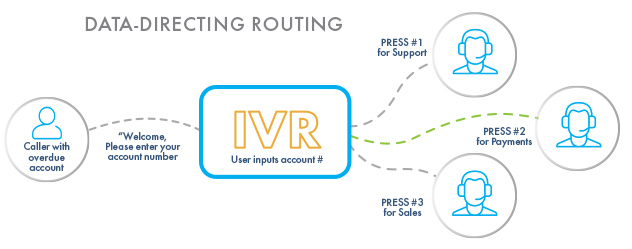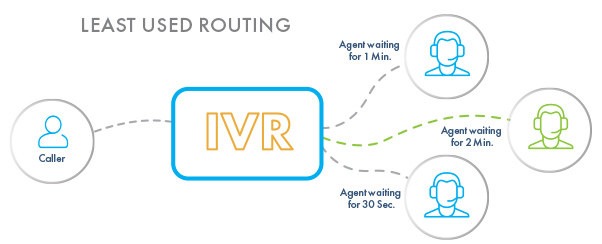This post shares information about direct inward dialing from over twenty years of telecommunications experience.
- What is Direct Inward Dialing?
- How Does DID Work?
- What is a DID Number?
- Top 4 Benefits
- Direct Outward Dialing
What is Direct Inward Dialing?
Direct inward dialing, also known as DID or direct dial-in, is a telecom service that forwards incoming calls directly to voice over IP (VoIP) or to another telephone number anywhere in the world. DID enables callers to directly dial in to a phone extension without the assistance of a live operator or voice response menu.
What is a DID Number?
A local telephone number that corresponds to a particular country or city, and is not tied to a physical phone line is called a “DID number” (and multiple numbers are called “DIDs”).
DIDs can help scale the capabilities of any business phone system by enabling multiple new phone numbers to ring through to a single phone system or user extensions in the cloud.
How Does DID Work?
Direct inward dialing works by routing calls from a virtual phone number to a mobile or regular phone number on the Public Switched Telephone Network (PSTN) or to a Private Branch Exchange (PBX).
Nearly all modern organizations use direct inward dialing. It allows them to provide unique contact phone numbers for various departments. For example, a company will usually have a different phone number or multiple DID numbers for support, sales, and other departments. It’s also common to see larger corporations with direct numbers for each employee.
DID numbers work without additional hardware and are one of the most scalable telecom solutions in the market. We found the following tech acronyms most relevant to DID. Here is how each technology relates to direct inward dialing.
Voice over IP
Calls made to a DID number are usually forwarded to voice over IP using Session Initiation Protocol (SIP). SIP is a signaling protocol used to terminate and maintain voice communications in private telephone systems. This is usually the most affordable option. In 2018, an estimated 36% of all businesses used VoIP.
Private Branch Exchange
Direct inward dialing is frequently used in combination with a Private Brach Exchange, which is a multiline telephone system used within a company or organization. The trunks for DID service are unidirectional, forwarding inbound calls to direct extensions on the PBX.
Public Switched Telephone Network (PSTN)
It is not uncommon for businesses to use direct inward dialing with their plain old telephone system, as calls can be routed to traditional landlines or mobile phones on the public switched telephone network. The quality is generally top-notch with underground copper wiring used to deliver calls.
In second place after VoIP, an estimated 24% of businesses terminated calls from their DIDs to PSTN in 2018.
Primary Rate Interface (PRI)
Primary Rate Interface (PRI) is a standard telecom interface that businesses use to carry voice and data transmissions over a network. PRI uses T1 carriers on an ISD Network to ensure premium call quality. It was used by about 11% of mostly larger businesses in 2018.
Fax
DID can be also used to receive fax transmissions over IP, enabling a single fax machine to receive transmissions from multiple different DID numbers. It is less common than usage for voice transmissions.
Top 4 Benefits of Direct Inward Dialing
Direct inward dialing has many benefits for businesses. It is a scalable service that helps businesses expand internationally and manage call traffic more effectively while reducing costs.
1. Scalability
The top benefit of direct inward dialing is scalability. The service enables organizations to have nearly unlimited unique phone numbers for different departments and employees without requiring any additional equipment. Anyone can start small and scale the network as their business grows.
2. International Expansion
Another major benefit of direct inward dialing is international expansion. It helps businesses of all sizes expand across borders, as it’s possible to get DID numbers in other countries without requiring any physical presence in those countries.
For example, someone could get international DID numbers from most of the 195 different countries around the world without any investments in physical infrastructure.
3. Call Tracking
It’s easy to get unique DID numbers for different departments or individual employees. This makes it possible to track productivity and return on marketing investments. Streamline various functions of your business with real-time access to call detail records and analytics.
4. Cost Savings
A major benefit of this service is reduced costs. Efficient spending is the lifeblood of small- and medium-sized businesses. Compared to physical expansion with traditional phone lines, DID with VoIP can reduce telecom costs by up to one third.
Does Your Business Need Direct Inward Dialing?
If you are looking for more efficient ways to manage inbound and outbound calls, then you may consider getting a direct inward dialing service. This service can cut down on receptionist costs by letting the caller reach the right department or employee. Furthermore, it reduces the time callers spend trying to find the right department and getting transferred from one to another. Together, you can improve caller experience and satisfaction.
DID versus Direct Outward Dialing (DOD)
Direct Outward Dialing (DOD) is a service that enables outbound calls from a DID number. DOD can complement direct inward dialing service to enable two-way voice communication with a fixed caller identification. In addition, DOD can also facilitate from any of the company’s main phone numbers on the network.
Where to Buy DID Numbers?
United World Telecom provides DID numbers for business. You can purchase new numbers with us or port your existing number. We will work with you to get multiple DIDs for your business teams. Speak with our representatives to get started today!
 Network & Reliablity
Network & Reliablity Country Coverage
Country Coverage Testimonials
Testimonials Customer Stories
Customer Stories Local 2-Way Voice
Local 2-Way Voice Toll Free Numbers
Toll Free Numbers Local Phone Numbers
Local Phone Numbers Toll Free FlexDial
Toll Free FlexDial BYOC
BYOC Outbound Calling
Outbound Calling SIP Trunking
SIP Trunking Call Forwarding
Call Forwarding AI Call Insights
AI Call Insights Call Transcription
Call Transcription IVR Auto-Attendant
IVR Auto-Attendant Analytics & Reporting
Analytics & Reporting Call Recording
Call Recording Time-of-Day Routing
Time-of-Day Routing Voicemail
Voicemail Salesforce
Salesforce HubSpot
HubSpot Zoho
Zoho  MS Teams
MS Teams  Genesys PureCloud
Genesys PureCloud 3CX
3CX Zendesk
Zendesk  Intercom
Intercom Gorgias
Gorgias Onboarding
Onboarding Knowledge Base
Knowledge Base Blog
Blog

![SIP Trunk Pricing Breakdown [Updated 2025]](https://www.unitedworldtelecom.com/wp-content/uploads/2020/04/sip-trunnk-pricing-breakdown.jpg)






